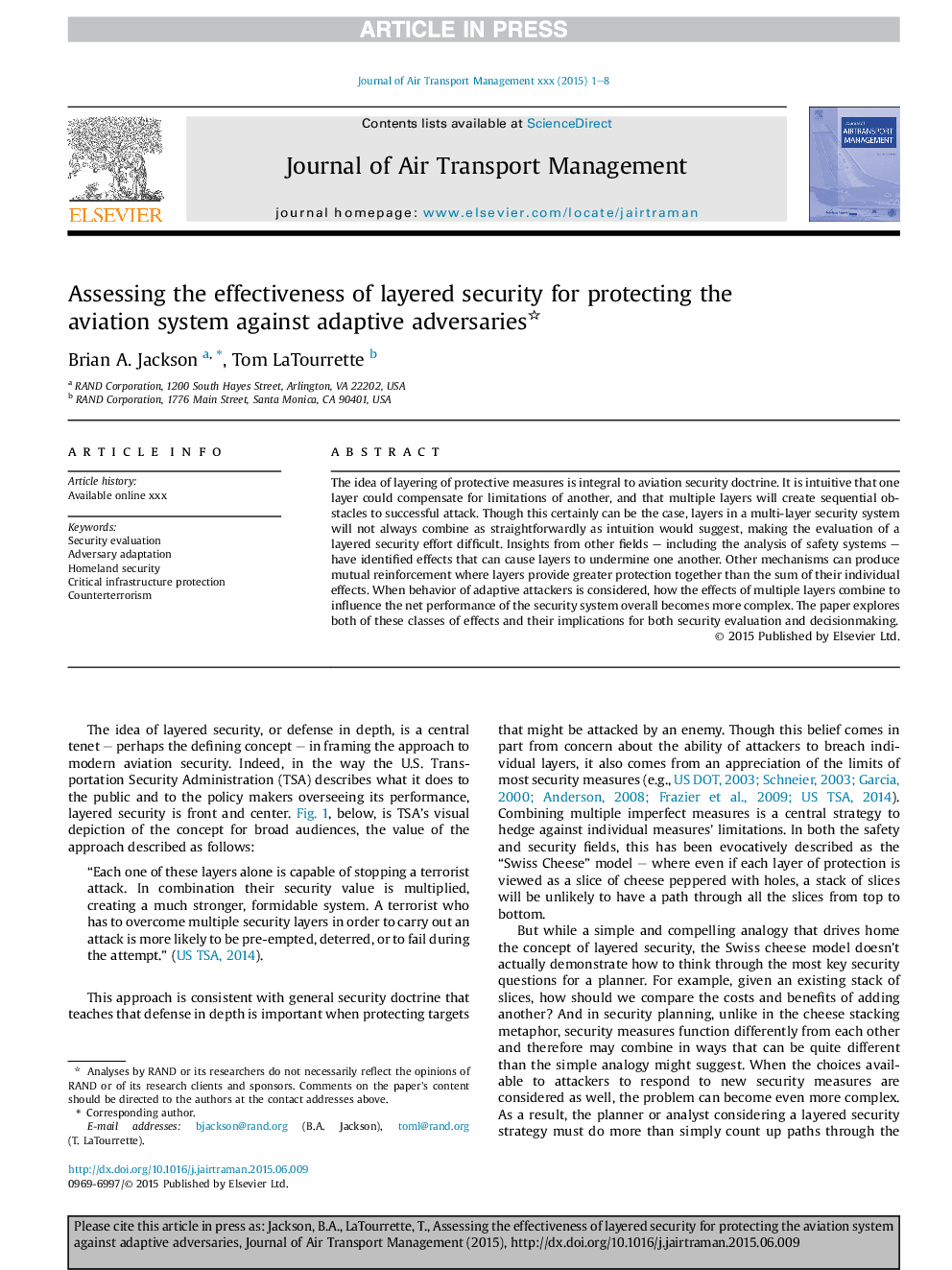| Article ID | Journal | Published Year | Pages | File Type |
|---|---|---|---|---|
| 7435638 | Journal of Air Transport Management | 2015 | 8 Pages |
Abstract
The idea of layering of protective measures is integral to aviation security doctrine. It is intuitive that one layer could compensate for limitations of another, and that multiple layers will create sequential obstacles to successful attack. Though this certainly can be the case, layers in a multi-layer security system will not always combine as straightforwardly as intuition would suggest, making the evaluation of a layered security effort difficult. Insights from other fields - including the analysis of safety systems - have identified effects that can cause layers to undermine one another. Other mechanisms can produce mutual reinforcement where layers provide greater protection together than the sum of their individual effects. When behavior of adaptive attackers is considered, how the effects of multiple layers combine to influence the net performance of the security system overall becomes more complex. The paper explores both of these classes of effects and their implications for both security evaluation and decisionmaking.
Related Topics
Social Sciences and Humanities
Business, Management and Accounting
Strategy and Management
Authors
Brian A. Jackson, Tom LaTourrette,
